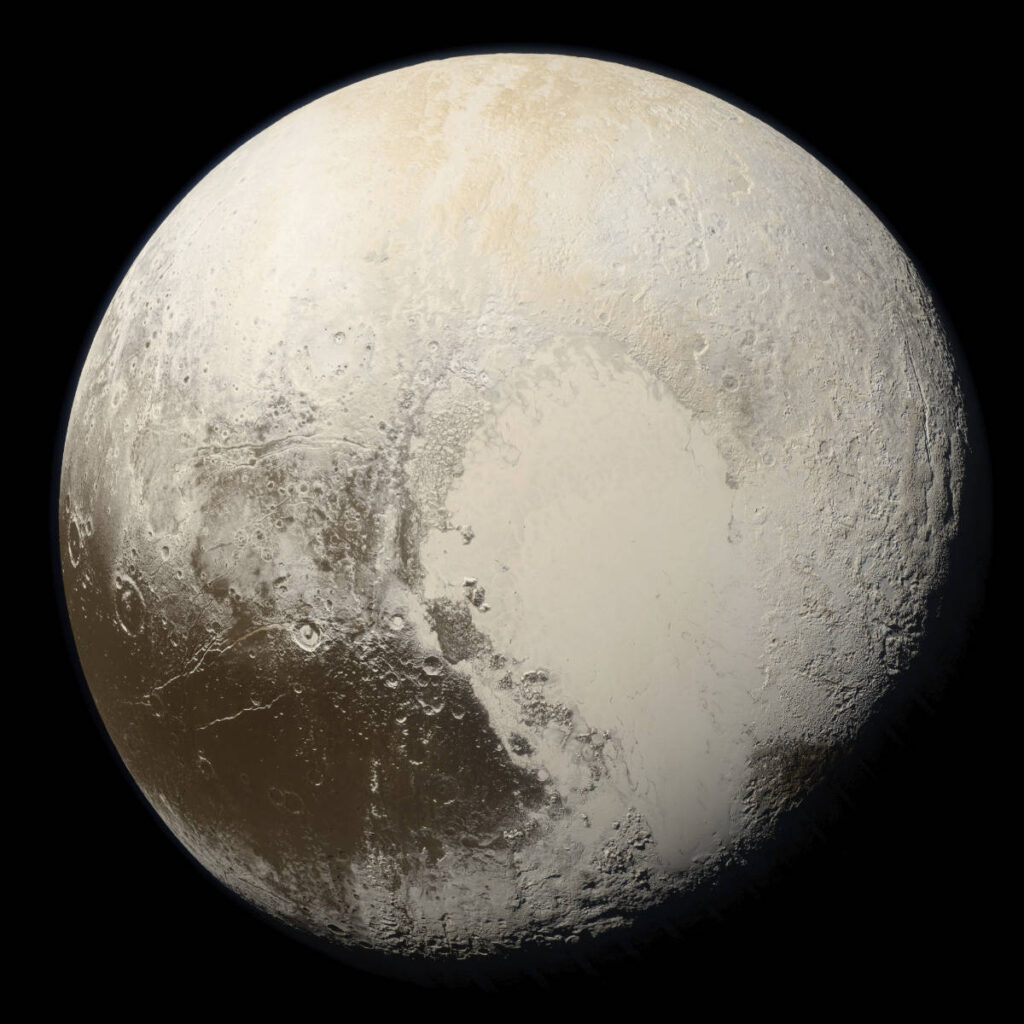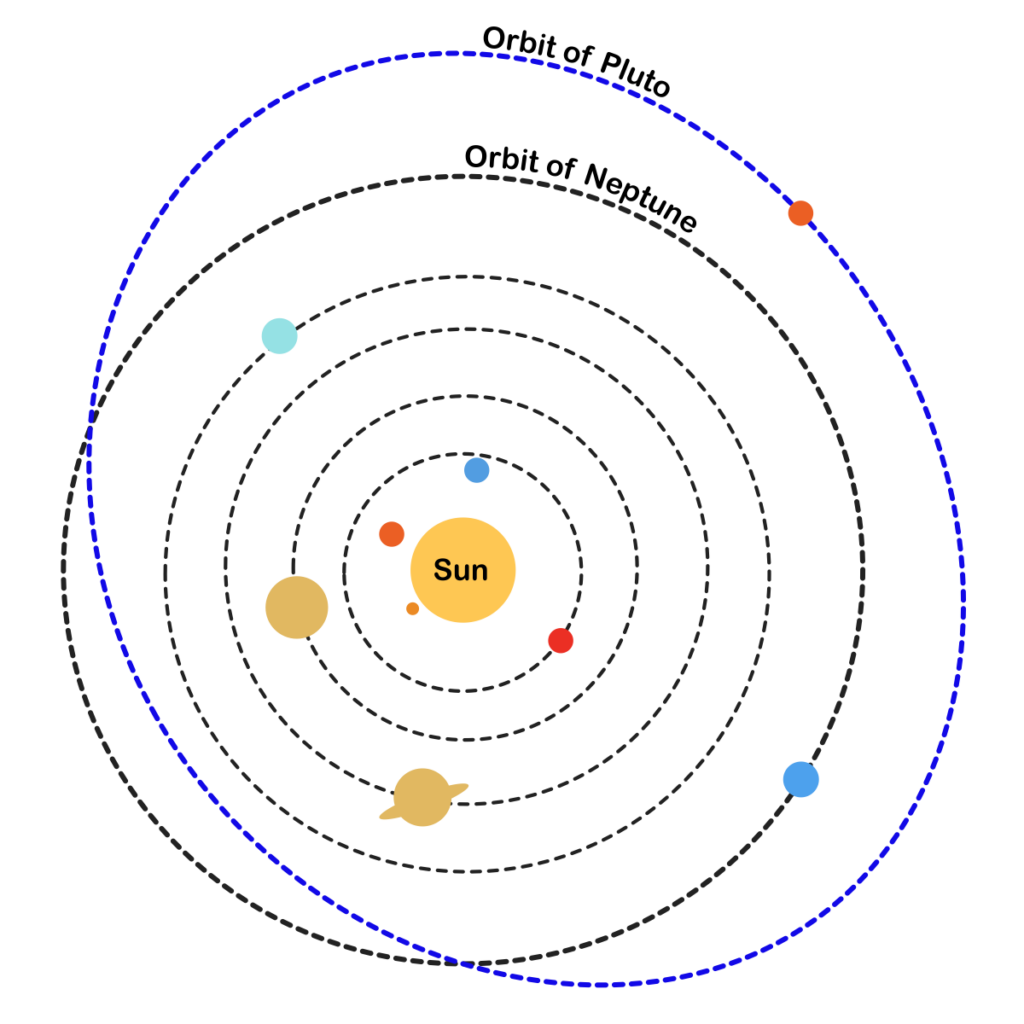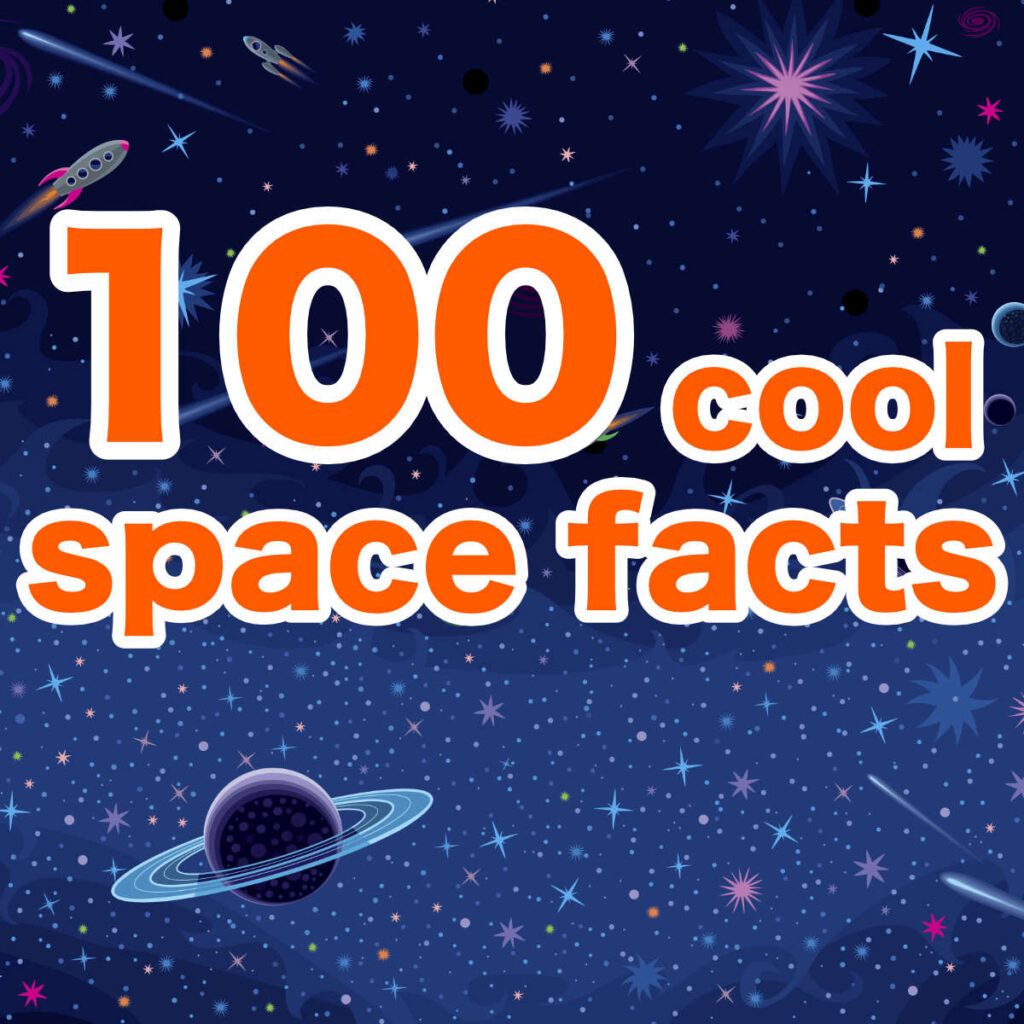Last Reviewed and Updated on August 1, 2022
The dwarf planet Pluto is one of the most known astronomical bodies in our Solar System, probably right after the planets and some of the largest moons. Discover some of the most interesting facts about Pluto, a dwarf planet that used to be a full-fledged planet for 76 years.

1. Pluto was discovered on February 18, 1930
The existence of Pluto was suggested for a few decades before it was discovered as astronomers speculated that the orbit of Uranus was disturbed by another planet besides Neptune.
Pluto was officially discovered and confirmed on February 18, 1930, using a blink comparator, a viewing apparatus that was used by astronomers to find differences between two photographs of the night sky.
Also read: when were the planets in our Solar System discovered?
2. This dwarf planet used to be classified as a planet
One of the coolest facts about Pluto is used to be the ninth planet in our Solar System. Following its discovery, Pluto was classified as a planet, and our Solar System officially had nine planets. It was classified as a planet for over 70 years until it was “demoted” to a dwarf planet in 2006.
3. It is likely the largest dwarf planet in our Solar System
Because it was once a planet, Pluto may well be the most known of all dwarf planets in our Solar System, but it’s far from being the only one. By diameter, Pluto is the largest of the dwarf planets in our Solar System, closely followed by Eris.
Eris was discovered in 2005, and it at first appeared to be bigger than Pluto.
By diameter, Pluto is the largest known dwarf planet in our Solar System, but we may yet discover a larger one in the outer regions of our Solar System.
4. Pluto has about the same surface area as Russia
The surface area of pluto is measured and calculated to be about 16,647,940km2, which makes the surface area of Pluto smaller than the surface area of Russia, the largest of all countries.
Some calculations and measurements, however, put this fact at a higher number, where the surface area of Pluto is slightly larger than Russia, so let’s settle on “about the same.”
5. The name Pluto was proposed by an 11-year-old girl
Venetia Burney, an eleven-year-old girl, who had an interest in classical mythology, suggested the name Pluto. The name was taken into consideration along with Minerva and Cronus, and the name Pluto was chosen. Pretty cool as far as facts about Pluto go.
In ancient Greek religion, Pluto is the god of the underworld.
6. As a planet, it was sometimes the 8th and sometimes the 9th

Pluto has a different orbit than the planets of our Solar System, so it didn’t really behave when it was a planet. The orbit of planets is mostly circular, while the orbit of Pluto is more elliptical and inclined.
Most of the time, Neptune, the eighth planet from the Sun, is closer to the Sun than Pluto is; however, a part of Pluto’s orbit gets this dwarf planet closer to the Sun than Neptune on occasion (every two centuries or so).
7. Pluto rotates on its side like Uranus
Looking from the orbital plane of Pluto, it rotates on its side with an axial tilt of 120°. This also means a part of Pluto is continuously exposed to sunlight, while on the other side, a part of it is continuously dark.
8. This dwarf planet is smaller than our Moon
With its radius of about 1,188.3 km, it is about two-thirds of our Moon.
9. It has its own moons; one might even be another dwarf planet
Pluto has at least five moons. They are Charon, Hydra, Kerberos, Nix, and Styx.
Charon is the largest known moon in relation to a planet or a dwarf planet. It is about half the size of Pluto, and both bodies orbit a common point in space.
What is one of the most interesting facts about Pluto is it might be classified as a double dwarf planetary system. It is possible, as both Charon and Pluto orbit a point in space and Charon thus doesn’t orbit Pluto, that the two will be classified as a double dwarf planet.
10. Pluto is one of the most contrastive bodies in our Solar System
There are many different colored regions on Pluto, and contrasts between them are very noticeable. The color varies from charcoal black to dark orange and white.
11. It has a blue sky
This dwarf planet has an atmosphere covered by a multi-layered haze (dust or cloudy appearance) covering the entire planet. The haze is blue-colored.
12. It takes Pluto 248 years to orbit the Sun
One Pluto year takes 248 Earth years.
13. A day on Pluto lasts 6.4 Earth days (or forever, depending how you look at it)
It takes Pluto 6.4 Earth days to complete one rotation around its axis.
However, as it rotates on its side, and one part (about a quarter) of this dwarf planet is constantly exposed to the Sun, the Sun never sets or rises in that part. If you defined a day as a night and day cycle, a day would last forever in some parts of Pluto.
Found this fact interesting? You will love our list of 100 space facts.

14. Pluto was photographed more than a decade before it was discovered
While discovered in 1930, the first photographs and observations of Pluto were made in at least 1909.
